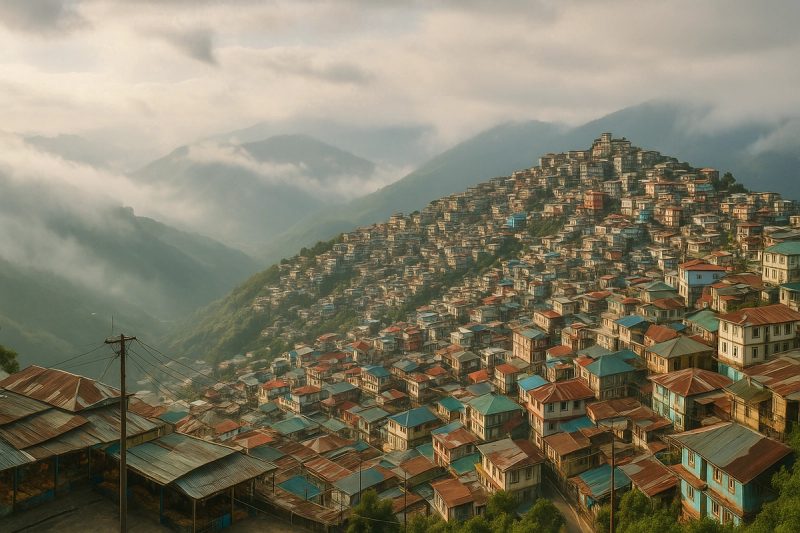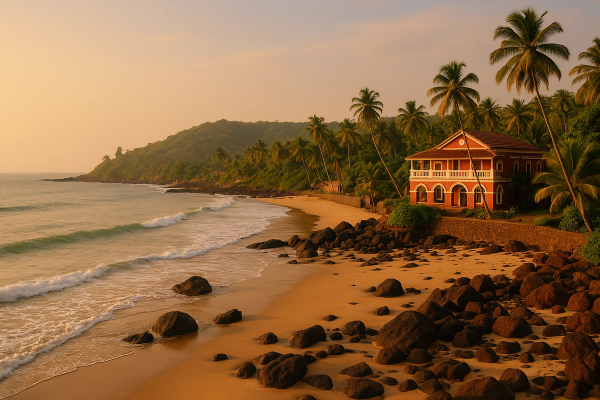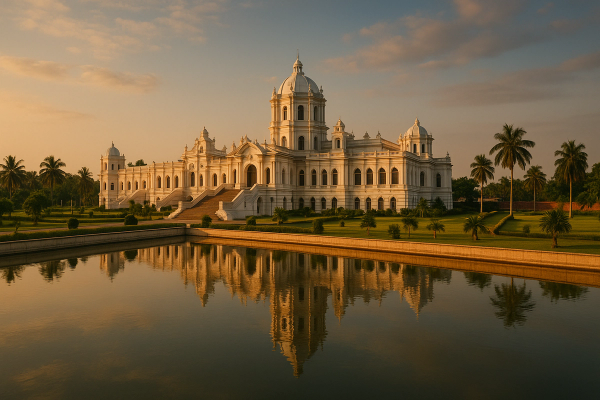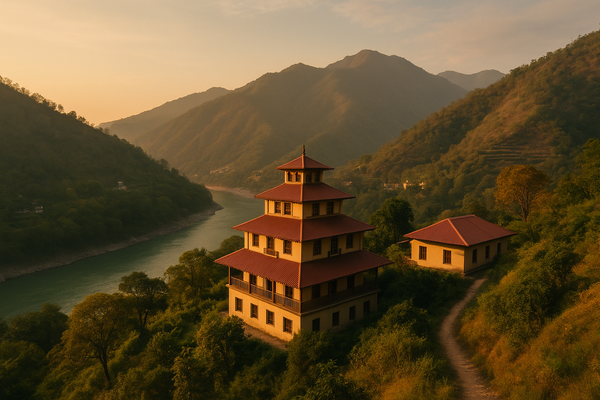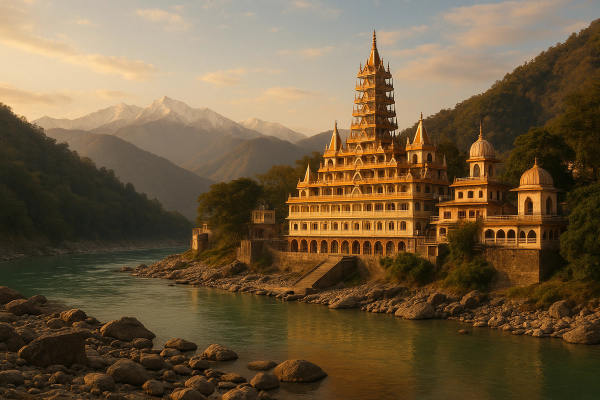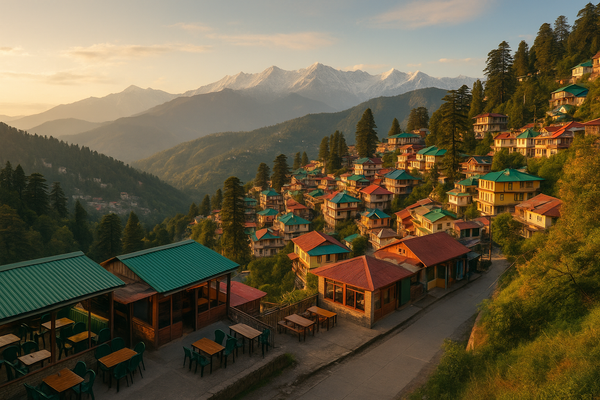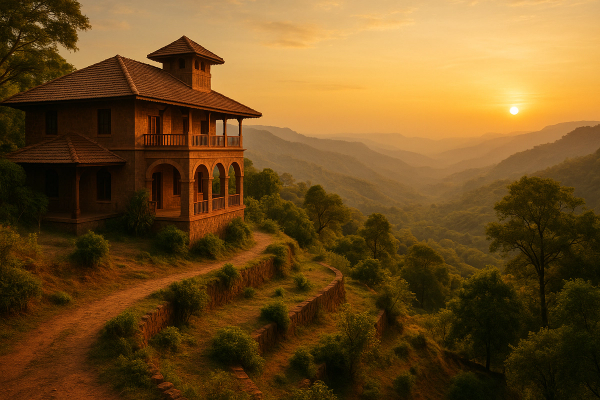Aizawl Travel Guide: Misty Hills, Markets & Mizo Culture (from one Indian traveler to another)#
If you like hill cities that feel like they’re floating, half-in-the-clouds, Aizawl is that dreamy cousin who shows up quietly and steals the show. The city spills across ridges and slopes, houses stacked like Lego in pastels, church spires peeking through mist. Morning is slow and silver. Evenings glow peach. People actually wait at zebra crossings. I mean, where else in India do cars stop without honking? Wild. You’ll get clean streets, polite nods, and a rhythm that’s calm-calm… until you hit the markets and everyone is bargaining softly for fresh bamboo shoots and puan fabrics. It’s not loud travel here. It’s… gentle, almost. And somehow that hits different.¶
Quick travel updates & the real vibe (read this first)#
- Inner Line Permit (ILP) is required for Indian citizens to enter Mizoram. As of 2025, you can get it online or at Lengpui Airport on arrival; carry soft + 2 printouts. Don’t skip it, they do check.
- Sundays are almost fully shut. Aizawl is deeply church-going and chilled on Sundays; restaurants, markets, even taxis can be limited. Plan around it.
- Alcohol rules are strict and change-y. Mizoram has had prohibition — dry or near-dry at times — so don’t expect typical bar-hopping. Respect local laws and keep it low-key.
- Safety: honestly, felt safe is the common refrain. People are kind, streets are clean, and petty crime is rare. Still, normal common sense — avoid wandering down dark, steep lanes alone late-late.
- Monsoon (June–Sept) can bring landslides and road closures on highways. Keep a buffer day if you’re coming by road. Flights get delayed when clouds brood over the hills. Pack patience.
- Payments: UPI works in city zones, but data can be patchy. Keep some cash. ATMs exist but don’t always have cash when you really need it (classic).¶
Best time to visit — when the hills behave#
October to April is sweet. Crisp mornings, golden sunsets, photogenic mist, and long views when the sky decides to be kind. December–January nights can be nippy — bring a light jacket and maybe a shawl. Summer (April–May) is pleasant compared to mainland heat, but mid-day sun still bites if you’re stair-climbing between neighborhoods. Monsoon paints the city jade — beautiful, yes — but roads can be a bit dicey. If you’re a trekker or photographer after clarity, aim for cool, post-monsoon months when the air is washed and the mountains look like they’ve been ironed.¶
Getting there & getting around (aka how not to get stuck on a hairpin bend)#
Fly into Lengpui Airport (AJL) — a slick strip tucked into the hills. Most connections come via Kolkata or Guwahati, sometimes via Delhi with a change. The airport drive to the city is scenic and swoopy, like a dragon’s tail — if you get motion-sick, pop a pill beforehand. By road, the usual approach is via Silchar (Assam) on NH306; it’s long and bendy, but the valleys… wow. Shared sumos run between towns, and they pack them up neatly like Tetris pieces. In the city, you’ll use white taxis (shared or private). No Uber/OLA as of now; fares are by distance and a dash of vibe, so agree before hopping in. Walking is gorgeous but steep. Your calves will curse you, then thank you. Scooty rentals are limited and roads get wet-slick — if you’re not used to hill riding, skip it. Btw, drivers are disciplined. Don’t honk, don’t litter. Aizawl notices.¶
Where to stay (neighbourhoods, budgets, and what actually works)#
- Zarkawt / Dawrpui: Central, close to markets and cafes. If you want to walk everywhere (and by walk I mean stairs), this is your jam.
- Chanmari: Slightly more residential, still central enough, good eateries tucked in.
- Durtlang: Up on the ridges with killer views; quieter nights. Great for sunrise people.
- Chaltlang / Khatla: Balanced, with access to taxis and decent small hotels.
Price-wise: budget guesthouses start around ₹1200–2000 per night (clean rooms, hot water, simple breakfast if you’re lucky). Mid-range hotels are ₹2500–5000 (bigger rooms, better views). A few nicer stays with proper views and polished service run ₹6000–9000+. Homestays are a vibe — warm hosts, home-cooked food, and tips you won’t find on the internet. Book early during festivals (more on that below), and always check if your taxi can actually reach right to the door — some lanes are walk-in only. Rolling suitcases plus staircases… not cute.¶
What to see in Aizawl (city sights you’ll actually care about)#
- Solomon’s Temple: A gleaming white church-complex with sweeping lawns and big sky views. Even if you’re not religious, the architecture + hush hits a chord.
- Mizoram State Museum (Zarkawt): Small, a bit old-school, but rich — textiles, bamboo craft, tribal history. Go slow. The puan motifs tell real stories.
- Durtlang Hills Viewpoints: Follow the ridge roads to catch city panoramas that look like a circuit board of houses. Dawn or just after rain is chef’s kiss.
- KV Paradise: A love-story monument, bright and a bit dramatic, perched above the city. Sunsets paint it soft-peach.
- Luangmual Handicrafts Centre: Bamboo and cane heaven. Pick practical stuff — trays, baskets — they last ages.
- Lammual (Assam Rifles Ground) & surrounding streets: Open space amid slopes, good for evening walks when the city lights flicker on.
- Church-hop (quietly): Architecture varies from minimalist to steepled classic. Sundays are for services — be respectful, modestly dressed, and ask before photos.
Day trips & nature around Aizawl (where the mist plays peekaboo)#
- Reiek Tlang & Reiek Heritage Village (about 30–45 km): Signature ridge trek with valleys that roll forever. The heritage village shows stilted traditional houses — yes, touristy, but insightful.
- Hmuifang: Forested slopes and picnic vibes. Short trails, orchids in season, and wind that brings you back to your breath.
- Tamdil (lake day): Calm water cupped by hills. Pack snacks; go unhurried. Great if you need water to reset your brain.
- Falkawn Mizo Village: Living museum-style setup that maps daily life and crafts. Ask questions — folks are happy to explain.
- Vantawng Falls (longer haul): Tall, ribboning waterfall near Serchhip. Combine it with a slow lunch somewhere leafy and call it a day.
Food, cafes, markets — what to eat and where to browse without getting FOMO#
Mizo food is clean, comforting, and not trying to impress you with spice. It’s real. Try bai (a hearty stew of local greens, bamboo shoot, and sometimes meat), vawksa rep (smoked pork that’s got this earthy depth), sawchiar (rice cooked with meat broth… gentle and delicious), and putharo (steamed rice bread) with chutneys that can singe but you’ll still want seconds. Bekang (fermented soybean) shows up subtly and adds that umami. Vegetarians, don’t panic — lots of greens and bamboo-based dishes, plus cafes that do sandwiches, pastas, pancakes. City cafes around Zarkawt/Chanmari pull solid coffee and pastries; order a lemon tea if clouds roll in — it tastes better when the air is cold, don’t ask me why.
Markets? Start at Bara Bazar in Dawrpui. It’s the backbone — stalls of woven puan shawls, cane baskets, smoked meats hanging like art, fresh produce that looks straight out of a monsoon poem. Go in the morning for the liveliest scene. If you like textiles, learn the stories behind the motifs before buying. And bargain gently — the style here is soft, not Delhi-haat gladiator mode. Carry a tote; plastic usage is frowned upon, and honestly, Aizawl’s cleanliness will make you feel weird about littering anyway.¶
Culture & etiquette (how not to be that tourist)#
- Language: Mizo is the heartbeat. English is widely understood in the city; Hindi less so. Learn a tiny bit — “Chibai” is hello; “Ka lawm e” is thank you. Try it, folks smile.
- Dress: Modest goes a long way, especially at churches and villages. Shoulders covered, no noisy behavior. Simple.
- Photos: Always ask before photographing people or inside churches. You’ll likely get a yes if you ask nicely.
- Cleanliness: Don’t toss wrappers. Aizawl is proud of being tidy — join the team.
- Sunday: Respect the rest day. If you’re here on a Sunday, walk, read, sip tea, watch the city exhale. It’s actually nice to slow down.
- Community first: Many experiences are run by local groups. Be on time, don’t haggle to the bone, and if you like something handmade, pay fairly.¶
A simple 2-day plan that… actually works#
Day 1: Start easy. Morning at Mizoram State Museum to anchor yourself in the culture, then stroll Zarkawt lanes for coffee and a light bite. Walk or taxi up to Durtlang for those big city views. Lunch near Dawrpui — look for a thali spot that serves bai and smoked pork, or go veg with seasonal greens and putharo. Late afternoon at Solomon’s Temple; it’s calmer as the sun softens. Dinner at a cafe that does both Mizo and continental (they exist, and they’re friendly about customizations). Early night; misty mornings reward early risers.
Day 2: Day trip to Reiek. Start early, carry water and light snacks. The ascent is manageable if you take your time; views from the top will make your phone run out of memory, so keep it on airplane mode and just… breathe. Back in Aizawl by late afternoon, stop at Luangmual for a quick handicraft browse. If you’re not wiped, night drive through the city — the hills dotted with warm lights look like stars poured onto mountains. If it’s Sunday, swap museum/cafes for slow walks and church services (only if invited/appropriate), or simply lounge and people-watch.¶
Festivals & what’s popping lately#
Mizo festivals are the secret sauce. Chapchar Kut (usually March) is the big spring festival — bamboo dance (Cheraw), music, color, and pure community joy. Pawl Kut (post-harvest) and Mim Kut (linked to maize harvest, late monsoon/early autumn) also bring performances and feasts. If your dates match, rework your itinerary to be in Aizawl during a festival day. Book stays early; the city fills up. Outside festivals, what’s trending is slow travel — homestays, guided walks by local youth groups, and textile workshops where you sit with a weaver and learn the “why” behind each pattern. It’s not Insta-fast and that’s the point.¶
Little secrets & lesser-known corners (shh, but tell your best friend)#
- Sunrise corners along Durtlang ridges give you ocean-of-clouds mornings after rainy nights. You stand there and the city looks like a ship sailing a cotton sea. Corny? Maybe. But you’ll feel it.
- Tiny noodle shops in side lanes do clear broths with smoked meat that tastes like rain and firewood at once. Ask taxi drivers where they eat.
- There are quiet cemeteries and old churches with plaque-stories if you like history that whispers rather than shouts.
- Evening markets in neighborhoods sell seasonal greens you won’t recognize. Buy a bunch, ask your host how to cook. You’ll learn more in one kitchen session than 10 blogs.
- The best souvenirs are everyday-use bamboo things. Every time you use them at home, you’ll remember the mist.¶
Health, safety & misc. (the stuff people Google at midnight)#
- Motion sickness: The city is a rollercoaster. Carry meds.
- Shoes: Good grip, lightweight. The lanes are steep and sometimes damp.
- Power & water: Usually fine in the city, but carry a small torch and a bottle. Don’t wast water — it’s valued here.
- Network: Airtel/Jio are okay in town, patchy outside. Download offline maps.
- Hospitals/clinics: Decent facilities in the city; carry your basics.
- Solo travelers: Generally safe. At night, stick to main roads, book known taxis, share location with someone. Normal India travel common-sense.
- Permits & ID: Keep ILP and a photo ID on you. Screenshots can save you if paper gets soggy in mist.¶
Costs & money talk (rough, real-world numbers)#
- Stays: Budget ₹1200–2000; mid ₹2500–5000; higher ₹6000–9000+ depending on views and bells’n’whistles.
- Food: Local meals ₹150–350 if you keep it simple; cafe mains ₹250–500; coffee/tea ₹80–200. Smoked pork platters can be ₹300–600.
- Local taxis: Short hops ₹100–250; longer cross-city ₹300–600. Day hire for city circuit might be ₹1800–2800 depending on hours.
- Day trips (car hire): Reiek/Hmuifang runs can be ₹3000–4500 return including wait-time; share if you can, it’s kinder to wallet and planet.
- Souvenirs: Handwoven shawls ₹1500–5000+ depending on weave; bamboo/cane baskets ₹200–800. Pay fair — it’s skilled work.
- Hidden costs: ILP fee (varies), extra taxi climbs to lanes where cars can’t go (sometimes a short, steep walk saves money and time). Carry a cushion of cash for no-network moments.¶
How to be a better guest (and keep Aizawl beautiful)#
- Pack-in, pack-out: Bring your bottle, refill at stay. Avoid single-use plastic.
- Support local: Homestays, local guides, neighborhood eateries. Your money circulates right there.
- Ask before drone use: Many areas frown upon it, esp. near churches and sensitive zones.
- Go slow: Don’t stack 14 places in a day. Aizawl rewards unhurried footsteps.
- Listen more: People here are soft-spoken. Match the tone. You’ll get more out of conversations than any checklist.¶
Why Aizawl lingers (and will kinda spoil other hill towns for you)#
There’s this gentleness in Aizawl that creeps up on you. The city isn’t putting on a show. It’s not hustling for your attention. You stand at a viewpoint, the wind smells green, a church bell rolls down the valley, and some aunty in a patterned puan zips past, fully unbothered by your camera. Markets feel lived-in, not curated. Cafes serve coffee like they mean it. And the hills? They teach you to walk a little slower, talk a little softer, look a little longer. You leave and the mist follows you home, I swear. In your head at least.¶
Saveable checklist (screenshots are fine, don’t overthink)#
- ILP sorted (2 copies), ID ready
- Good shoes, light rain layer, warm layer for nights
- Offline maps, cash buffer, UPI set
- Respect Sunday quiet, ask before photos
- Eat bai, smoked pork (or veggie version), putharo; buy bamboo things
- Sunrise at Durtlang, day-trip to Reiek, sunset at Solomon’s Temple
- Book stays early during festivals (Chapchar Kut etc.)
- Keep it clean, keep it kind. You know, basic decency.¶
Final notes (and a tiny request)#
If you’re plotting Aizawl, give yourself time. Two full days in the city plus a day trip is the bare minimum; four is better; a week and you’ll start feeling like a local who still gets lost, which is kinda perfect. Don’t chase ten thousand spots — chase the feeling of being there. Let the hills rearrange your brain chemistry a little. And hey, if you want more India travel stories and practical guides, I keep finding good stuff on AllBlogs.in — it’s a nice rabbit hole before your next misty escape.¶

